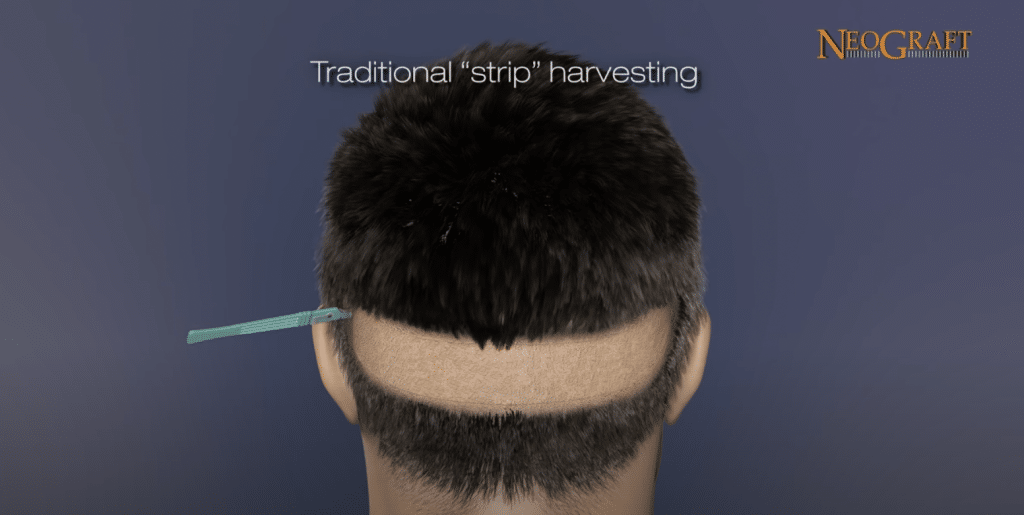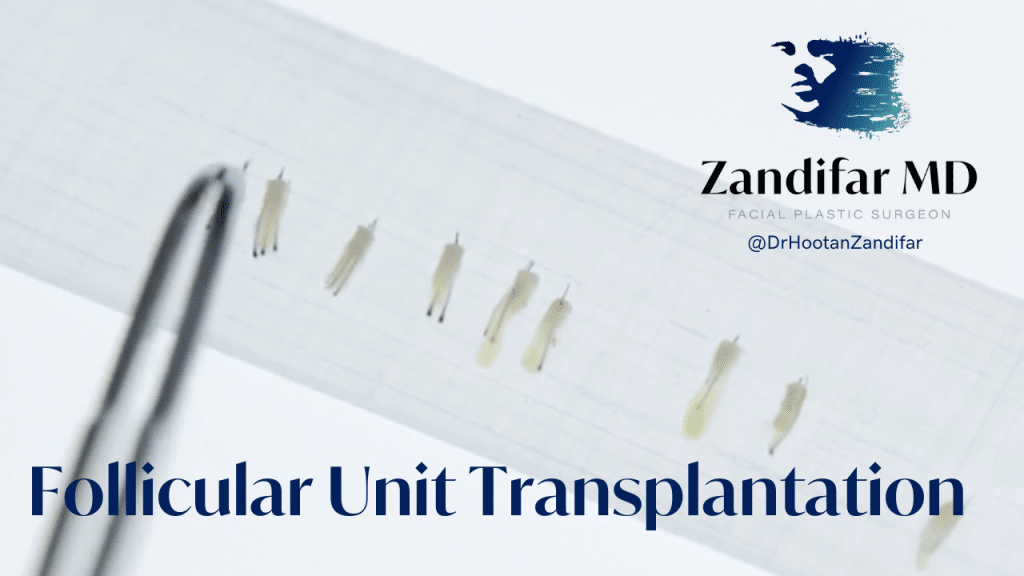Hi everyone. I’m Dr. Hootan Zandifar, a double-board certified facial plastic and reconstructive surgeon and a hair transplant specialist. I wanted to take a few minutes to go over the history of hair transplantation with you and talk about some of the advances that we have and what the future looks like.
Mid to late 20th century, hair transplantation was still something that was evolving. You know, techniques to restore balding spots included various surgeries where you take pieces of hair-bearing scalp and you rotate it to cover the bald spots. Or you do what was called macro-grafting, you take big patches of hair and implant it in balding spots. As you can imagine, even though it did give hair coverage to areas that didn’t have hair, it didn’t look natural. The rotation the flaps left big scars in place and the direction of hair growth wasn’t normal or natural. There was no hair part, and many other kinds of challenges.
The big macro-graphs for the big patches of hair-bearing skin that were implanted, give you that telltale sign of hair plugs, where it kind of looked like palm trees that are coming out of the scalp. It looked very unnatural and not cosmetically something that was desirable.
As techniques advanced as our science about hair anatomy and physiology events, we realize that we can make those grafts smaller and smaller and smaller, they became micro-graft. So they were smaller, they weren’t as big of a patch. And people would kind of implant them and roll close to each other to give more of a fuller hair, they still looked a little bit unnatural though they looked better than before. And finally, we were able to understand the follicular unit of hair. Now follicular unit is a patch hair that’s grouped together, and it can have 1, 2, 3, 4, maybe 5 hair follicles coming out of it. But they’re just grouped together, they grow together, and this follicular unit can then be implanted.
This technique was called follicular unit transplantation or F.U.T. for short. With follicular unit transplantation we were able to take these small follicular units and transplant them over the balding area. And as we improved our technique of transplantation and we kind of improved how we could put the hairs in the hair line, we were able to give a very natural looking hairline and full head of hair that looked and behave exactly as normal hair in that area did this was cosmetically beautiful and natural. No one would know that there was any hair transplantation that was done, this hair could be cut, could be colored, could be styled the way that you normally would style hair in that area. The only challenge that follicular unit transplantation at that time had, was that in order to get those hairs, we’d have to pick a big strip of skin from back of the scalp. And then when you suture that there was a visible scar back there. So you could never wear your hair short. This was the strip technique. Now, as the century came to an end, there was increasing advancements in what is called follicular unit extraction where we use a device such as the device we have here – to small, individually extract these little hair follicles from the back of the scalp and on the side of the scalp where the hair follicles are immune to the effects of balding. These hair follicles were individually being plucked. And then we would take that and then transplant them into areas that are needed. This is called the follicular unit extraction technique or the F.U.T.
The beauty of the F.U.T. was that you get these hairs out the same as you would with the strip technique. But then we no longer had that telltale strip scar. So it’s almost like a no-visible-scar technique. You could shave your head and no one would know that you’ve had hair transplantation. You could style your hair however you wanted to. With the advent of follicular unit extraction and follicular unit transplantation, hair transplantation went from hair plugs and visible scars and really not good looking hair transplantation to something that today no one will know that you’ve had anything done.
Now recently, there’s been more advances with robotics and augmented reality that has allowed us to improve our techniques and our results even more. So this has been a short brief history of how hair transplantation has evolved over the past century. Now if you have any further questions, you can call our office, come and see us, message us on social media and just allow us to be a resource of information for you regarding hair transplantation. Thank you and we’ll see you soon.



